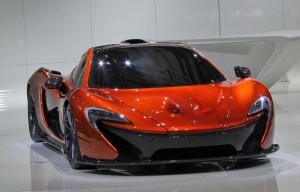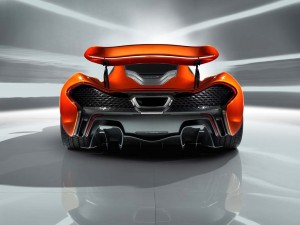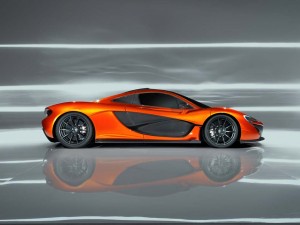
McLaren is keeping key details close to the vest, for now, but confirms the P1 will go on sale by spring 2013.
McLaren is billing the new P1 as the “ultimate supercar,” a claim the folks from Ferrari and Lamborghini might protest. But it’s the closest we’ve yet seen to the legendary McLaren F1 of more than a decade past – and its rollout at the Paris Motor Show generated more excitement than just about any other introduction at the biennial show.
Since its founding as a race team, McLaren has never been anything but ambitious – and its success on the Formula One track is proof positive of its capabilities, underscored Chairman Ron Dennis, who declared, “”The McLaren P1 will be the result of 50 years of racing and road car heritage,” during the well-attended unveiling at the Mondial de l’Automobile.
Like rival British sports carmaker Lotus, McLaren has laid out an ambitious target – in this case, rolling out a new model every year. In McLaren’s case, it’s delivering. The P1 will be its third new offering starting with the MP4-12C and the newer convertible version of that 2-seat supercar.
“We’re becoming – on a small scale – a real car company now,” declared Managing Director Tony Sheriff, noting that McLaren expects to complete deliveries of 1,500 vehicles by year end.
Unfortunately, company officials weren’t so open with the numbers that matter, specifically horsepower and performance ratings for the McLaren P1. That said, sources suggest that the P1 – earlier expected to be called the P12 – will rely on McLaren’s current 3.8-liter twin-turbo V-8 powertrain. It seems likely the maker will find a way to squeeze out significantly more than the MP4’s 616 horsepower – possibly as much as 800, according to some reports.
As with the MP4, expect a somewhat Jeckyll-and-Hyde personality. The new McLaren P1 promises to be a surprisingly drivable vehicle, something that will deliver “great comfort and refinement,” according to Program Director Paul Mackenzie, but with the push of a button it will transform into “a proper racing car.”

Details like the rear wing, shown extended here, help the McLaren generate up to 600 lbs of downforce.
Designed by former Ferrari styling boss Frank Stephenson, the McLaren P1 has a striking shape that is quite different from both the MP4 and the original McLaren F1. But it’s also very different from rivals Ferrari and Lambo, clearly reflecting the function-over-form philosophy of McLaren. Even the exterior rollbar serves double-duty, channeling air into the engine bay.
There are two other air intakes in each of the P1’s doors. Breathing and cooling are two of the biggest challenges with the program, according to those who’ve worked on the project.
“There’s really nothing here for show,” stressed Mackenzie. All visible details are designed for a very specific purpose, such as aerodynamics, the McLaren delivering a stunning 600 pounds of downforce on the track.
The lack of hard numbers reflects the fact that the McLaren P1 is a work-in-progress. The show car did not even have an interior. Final work likely won’t be completed until closer to the 2013 launch date.
But several details emerged during and after the Paris preview. No surprise, McLaren will continue to advanced carbon0fiber technology for the P1 platform – as it did with the original F1 and the marque’s newer offerings.
Carbon fiber, noted Dennis, “is developed now to the point it has infinite capabilities and opportunities.” Nonetheless, it is extraordinarily expensive and difficult to work with, though McLaren has gotten its production techniques down to where it takes little more than 1% of the manpower to produce the CF parts for the MP4-12C as the original F1. “That’s the breakthrough,” Dennis proclaimed.
The P1 is expected to allow extensive customization of driving dynamics, including throttle and shift behavior, suspension settings and ride height. In track mode, one of three height settings, the McLaren P1 will barely clear the tarmac, much like the LeMans racer it’s intended to look like.
Pricing is anticipated to be somewhere between $1 million and $1.25 million – in the range of the original F1. But specific numbers, including performance details, likely won’t be revealed until closer to the McLaren P1’s official on-sale date next spring.

